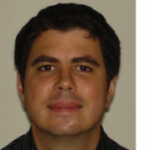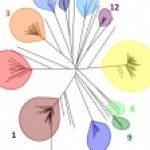Lien vers Pubmed [PMID] – 17928418
J Clin Microbiol 2007 Dec; 45(12): 3958-63
For genotyping Candida albicans isolates, two PCR-based methods have recently emerged: multilocus sequence typing (MLST), based on the sequence of selected genes, and microsatellite length polymorphism (MLP), based on the length of PCR products containing variable numbers of short DNA repeats. To compare the two methods in their abilities to differentiate and group C. albicans isolates, we selected 50 independent isolates collected at the National Reference Center for Mycoses and Antifungals. MLST typing was performed using sequencing of seven loci as described at (http://test1.mlst.net). The MLP method consisted of a single multiplex PCR testing three different loci. Dendrograms were constructed by the unweighted pair group cluster method with Euclidean metric for both methods. The correlation between the distance matrices was performed with a Mantel test tested with 1,000 random permutations. The sensitivity and specificity of the MLP typing system were determined after allocating MLST groups for the greater number of isolates of each distinct MLP group. The discriminatory power index was >0.99, and the distances between the isolates were highly correlated with both systems. The Mantel coefficient and the Pearson product-moment correlation coefficient were 35,699 and 0.32, respectively (P < or = 1.2 x 10(-6)). Using MLP, the average specificity and sensitivity of clustering compared to MLST were 83% and 73%, respectively, when the singletons were excluded. The two methods are similarly discriminatory and can be interchangeable depending on the objectives. MLP is less expensive and faster than MLST. However, MLST is currently more accurate and additional standardization is needed for MLP.




